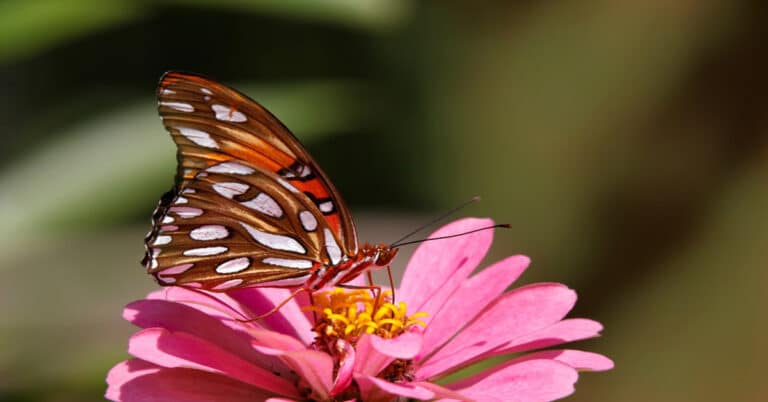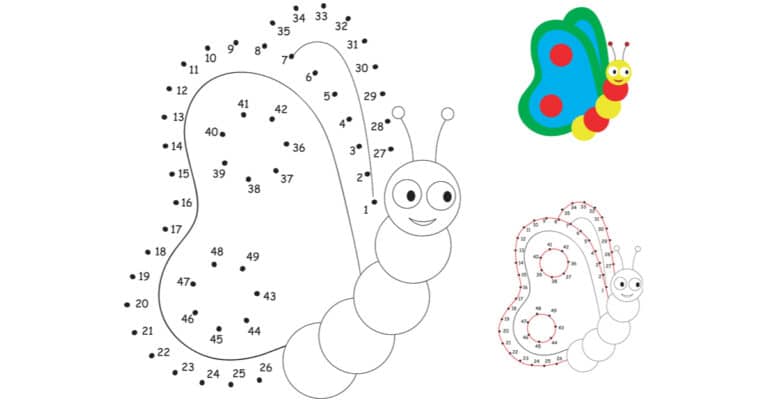What Do Monarch Butterflies Eat?

Monarch Butterflies are sometimes called Milkweed Butterflies because of their symbiotic relationship with milkweed. They cannot survive without plants in the genus Asclepias. However, a full answer to the question of butterfly nutrition, considering all the sources of nourishment the insects take in during the four stages of the Monarch Butterfly life cycle, goes beyond milkweed, even though.
Monarch Butterfly caterpillars eat ONLY milkweed
Do not try to offer them alternate food plants. Some caterpillars like variety in their diet. Monarch Butterfly larvae do not. Milkweed is the only plant food that will keep them alive.
Monarch Butterfly caterpillars

This is How Butterflies Eat.
After eating their eggshells Monarch Butterfly caterpillars usually eat nothing but milkweed. They do little else but eat milkweed until they literally burst out of their skins (molt). However, some tidy individuals will eat their old skins after they crawl out in their new ones. Each caterpillar goes through five skins with different arrangements of colors on each skin.
The stage of a caterpillar’s life that it spends in each skin is called an instar. During their first two instars Monarch Butterfly caterpillars gnaw small round holes in milkweed leaves. The leaves ooze latex to seal the cut edges so the leaves can survive a little damage, and the caterpillars nibble around in a circular pattern for as long as they can get at fresh leaf material without having to eat latex. Then they move on to a different part of the leaf, or a different leaf. In this way the hungry caterpillars can eat almost continuously without damaging the milkweed plant. Milkweed makes Monarch Butterflies poisonous to vertebrate predators.
In the next two instars the caterpillars start eating from the edges of the leaves. By this time the milkweed plant has had time to grow big enough and produce enough leaves that it can spare the leaves the caterpillar eats.
In the fifth instar the finger-long caterpillars are very efficient eaters and may be able to dispose of a whole milkweed leaf in five minutes. Their digestive systems store cardenolides (the biochemicals that make milkweed mildly toxic to other animals, including humans) in their body tissues, store up fat and nutrients for the caterpillars to live on during pupation, and discard liberal amounts of chewed-up plant material called frass. Hungry as they are, they usually don’t consume the whole food plant. After devouring a few leaves they stop eating and pupate.
Monarch Butterfly eggs
Baby Monarch Butterflies gestate inside eggs. When they hatch, the first things they eat are the tiny eggshells out of which they just crawled.
Monarch Butterfly pupae

Once a Monarch Butterfly caterpillar spins its little pad of silk and assumes the position, hanging by its claspers, it has done all the chewing and swallowing it will ever do. Caterpillars have jaws similar to beetles’ butterflies have tubular mouth parts, longer and more flexible than bugs. The pupa inside a Monarch Butterfly chrysalis is undergoing a makeover so extreme we don’t know exactly how it transforms. Fuel for the metamorphosis comes from food stored up by the caterpillar.
Adult Monarch Butterfly

Courtesy Ellen Lucy
The adult Monarch Butterfly eats through its tubular proboscis, so it can consume only liquids. In the process of sucking nectar out of flowers, it pollinates those flowers.
When milkweed blooms, its blooms are one of the favorite Monarch Butterfly food plants. Female Monarch Butterflies spend most of their time looking for milkweed plants. Their goal is to lay each egg on a separate plant, and they may have a thousand or more eggs to lay, though not all at the same time. Along the way, they sip the nectar and transfer the pollen among the tubular florets of the milkweed bloom. Female Monarchs also seem to get some nutrients from the spermatophore after mating, but they fuel their flight with a variety of sugary liquids.
Some beautiful butterflies are major composters. If you find some disgusting, moldy, rotten food at the back of the refrigerator and set it on the ground, Silver-spotted Skippers, Red-Spotted Purples, Tiger Swallowtails, and other pretty-winged butterflies will visit you. Monarchs aren’t so keen on rotten meat or vegetables, but they do like day-old, mushy fruit. They appreciate watermelon rinds, overripe bananas, and citrus fruit sliced across the sections, and they may help you use up half-cans of fruit. Organically grown fruit, free from pesticide residues, is best for the butterflies’ health.
Monarch Butterflies sip plain water. Sometimes they also choose brackish or polluted water.
If you can’t offer flowers to butterflies, you can buy butterfly feeders that dispense sugar solutions. Flowers may not be blooming by the time butterflies who have hibernated come back to your garden. What to feed a Monarch Butterfly you have reared indoors is sugar syrup, a slice of overripe fruit, or fresh flowers raised in the same greenhouse whichever is unsprayed. They also like honey, but honey without pesticide residues can be hard to find.
Monarch Butterflies’ flower preferences are generally for tall flowers with lots of tubular florets. In addition to milkweed, they like red clover, asters, eupatoriums (boneset), thistles, and echinacea (coneflowers). If your neighbors think these common weeds are too easy to grow, reassure them that you are gardening by planting zinnias, liatris, or candytuft. Monarchs visit lots of different flowers while flying about in search of milkweed. A Monarch Butterfly garden contains a variety of other flowers that bloom before milkweed does and several milkweed plants. It will attract many other butterflies, possibly hummingbirds, and some songbirds who may eat some of the butterflies. Though you might see a male butterfly of a smaller species guarding a flower that might attract a prospective mate, overall the different butterflies and hummingbirds help one another by pollinating the flowers.
Each adult Monarch likes to be the only one of its kind in a garden. One Monarch Butterfly egg to a milkweed plant is the proportion that gives both Monarchs and milkweeds the best prospects for survival, so after one Monarch or a pair has spent one day in the garden, other Monarchs in that generation will probably stay barely long enough to taste a flower.
Monarchs are native to North America and adapted to live on flowers that are also native to the same places where Monarch Butterflies live. It is not surprising, then, that most of the flowers Monarch Butterflies like best are common weeds in the places where they grow well. Monarch Butterfly gardens are low-maintenance. All the gardener needs to do is leave these plants room to grow:
Alfalfa, Allium (chives), Asters, Blue Porterweed, Butterfly Bush (Buddleia), Candytuft, Carrot (Queen Anne’s Lace is the native wild strain of the carrots humans cultivate for food. Monarchs will help garden carrots go feral and evolve back into Queen Anne’s Lace if you let the plants go to seed.), Cosmos, Dame’s Rocket, Echinacea (coneflower, especially purple coneflower), Erysimum (Siberian Wallflower), Eupatorium (boneset, Joe Pye weed, Queen of the Meadow, etc.), Goldenrod, Indian Hemp, Ironweed, Lantana, Liatris (Blazing Star), Lilac (Syringa), Milkweed, Pincushion Flowers, Red Clover, Salvia, Sunflowers, Teasel, Thistles, Verbena, Zinnia
All of these flowers will attract a variety of butterflies. Your chance of seeing a Monarch Butterfly feeding at a flower is greatest during the season when most of them pass through your neighborhood. In the South Monarchs are most often seen in spring and autumn; in the North, they are most often seen in summer. Other butterflies, some of which look like Monarchs from a distance, help pollinate Monarch Butterfly food plants while the Monarchs are at other stages of their annual migration.
In the winter, in the Monarch Butterfly groves in Mexico and California, the butterflies rest and live on nutrients stored in their bodies. They may wake up and sip water during hibernation, and they look for water and flower nectar before migrating north and looking for milkweed.

Having discovered a fondness for insects while pursuing her degree in Biology, Randi Jones was quite bugged to know that people usually dismissed these little creatures as “creepy-crawlies”.







